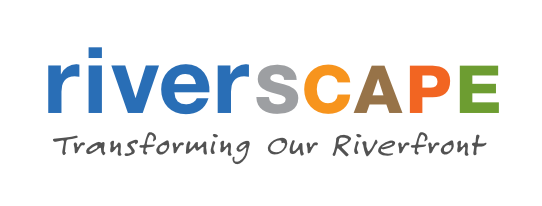Restoring the Wabashiki Land
The expanded Wabashiki project further enhances Indiana’s position as a leader in wetlands and riparian protection. The area is bounded by State Road 63 on the north, the town of West Terre Haute and State Road 150 on the west, Interstate 70 on the south, and First Street in the city of Terre Haute in the east. The total area is approximately 7000 acres. However, the Wetland Reserve Program (WRP) utilization and the development of the Living Park should not be limited to these geographic boundaries. U.S. 40, designated as an All American Road and National Scenic Byway, bisects the study area. The project’s location along 19.5 miles of the Wabash River immediately across the river from downtown Terre Haute creates a unique setting. Fairbanks Park and other planned riverfront development on the east side (Terre Haute side) of the Wabash will be directly across the river from this new Fish and Wildlife Area.
The area is called the Wabashiki, the name that the Miami Indians used for the Wabash River (pronounced Wa-ba-she-key). The area is protected and restored to wetlands and wildlife habitat, including fishing lakes, bottomland hardwood forests, emergent shallow water marshes, moist soil wetland areas, and upland habitat/ native grass areas. The Wabashiki provides exceptional habitat to resident and migratory wildlife and has become an IDNR managed area for hunting small and sizeable upland game and waterfowl.
The Future of the Wabashiki
The Wabashiki area and the entire trail network will play host to various local, state, and regional runs, bikes, walks, and other competitions and events because of the unique nature of the terrain and environment. The lakes will host fishing and model boat tourneys. The wetlands will become a regional draw for birdwatchers and nature enthusiasts. The Wabashiki Wetlands will be an attractive destination for hunters, anglers, and birders, bringing new dollars to the economies of West Terre Haute, and Terre Haute. The river will be the site of rowing and canoeing competitions associated with local colleges and universities and clubs and enthusiasts. The Banks of the Wabash Festival will grow and expand its range of attractions and interests. More opportunities for boating on the river will be made available, both commercially and privately.
The Wabashiki Trail Network includes:
The West Terre Haute Levee Trail both north and south of the town
The West Terre Haute Trail connected to Terre Haute by a pedestrian connector, located on the south side of Old U.S. 40 to Dresser Park and then across the Dreiser Bridge to Terre Haute, providing pedestrian, biking, and running access between West Terre Haute and Terre Haute.
A trail to Saint Mary-of the Woods College from Dewey Point, connecting the Woods, Indiana State University and Rose-Hulman through downtown Terre Haute via the National HeritageTrail.
The roadside park (Dewey Point) on the east edge of West Terre Haute serves as a trailhead for the West Terre Haute levee trail. Dewey Point is filled with amenities such as a kayak launch, bird-watching scopes, picnic tables, and restrooms. Dewey Point is maintained by the Vigo County Parks and Recreation Department. Dewey Point provides an attractive, landscaped entrance to West Terre Haute.
The Economic Impact
The Ox-Bow of the Wabash River, located south of I-70, is part of the Wabashiki Wetlands operated by the IDNR. Wetlands are a source of fish, waterfowl, shellfish, and other animals are harvested for food. Healthy wetlands are needed to maintain the resource base for this part of the food production economy. Wetlands have an unrealized food production potential through the harvest of vegetation and aquaculture. Forested wetlands often contain high-value tree species, and under proper management, they can be a vital source of timber and hardwood products. Currently, in Indiana, nearly half of the wetland acres are forested.
The World Wildlife Fund report summarized the monetary value of various wetland services. In 2004 dollars, the median flood control value equaled $1,147 per acre per year. Recreational fishing garnered $924 per acre per year, and recreational hunting accounted for $304 per acre. Water supply equaled $111 per acre per year. Also, wetlands provide value to adjacent land. The value of land near a wetland consistently proves to be higher than land located elsewhere. The idea of a wetland premium is important for two reasons. Intrinsically, the wetland provides an additional service to the real estate purchaser- added space, wildlife habitat in close proximity, and sight of water. Additionally, adjacent wetlands guard landowners against flooding. Based on research conducted by the EPA, there is typically a $10,000 premium on land located next to a wetland.
Importance of Wetlands
Wetlands can store massive amounts of water and help slow the flow of surface water. This function is essential in providing flood control. The presence of wetlands can help to reduce the danger of flooding during the peak water flow when flood damage potential is the highest. Wetlands store stormwater and reduce the amount of sharp peaks of water runoff by releasing the water over slower periods. Wetlands help to maintain Indiana’s water quality. They absorb excess inorganic and organic materials found in septic-system runoff, fertilizers from yards and farms, eroded soil, and other sediments. They also lessen the agricultural runoff that eventually finds its way into the Gulf of Mexico.
Wetlands are a site of groundwater recharge, a place where groundwater moves laterally upward toward the surface. However, [the] reverse is also believed to be true. Wetlands recharge the groundwater system and aquifers that ultimately provide water to our faucets. Wetlands help to stabilize shorelines and prevent the loss of soil through erosion. Underwater, the roots of wetland plants bind the soil together and hold it in place. Above the water, the leaves of the plants absorb wave energy and slow water flow. Wetlands also trap sediments that would otherwise be washed away. The presence of wetlands on the fringes of the shoreline helps to absorb shock and provides important erosion control for lakefront properties.
